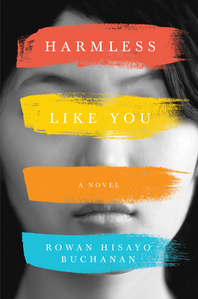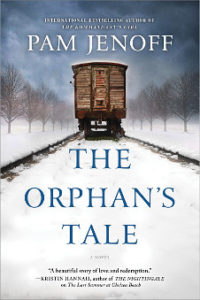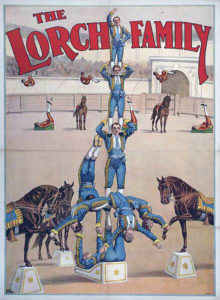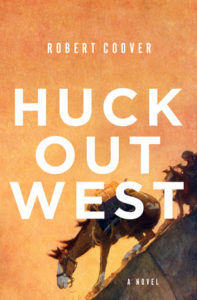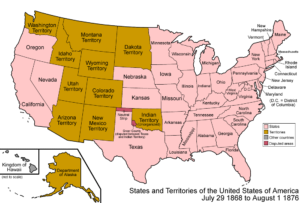 Haunted house, mountainscape, characters – a Southern Gothic novel (Appalachian region, Blue Ridge Mountains, North Carolina; three generations spanning the 20th century): For a blog that prizes prose above all, The Barrowfields is a stunner. It wins for beautiful, atmospheric, sorrowful prose. A blend of formal, literary/poetic, Appalachian dialect, conversational, and a bit of legalese. Versatile prose that rhythmically evokes “eloquent sadness” set in a beautiful, forlorn place with a heavyhearted clan.
Haunted house, mountainscape, characters – a Southern Gothic novel (Appalachian region, Blue Ridge Mountains, North Carolina; three generations spanning the 20th century): For a blog that prizes prose above all, The Barrowfields is a stunner. It wins for beautiful, atmospheric, sorrowful prose. A blend of formal, literary/poetic, Appalachian dialect, conversational, and a bit of legalese. Versatile prose that rhythmically evokes “eloquent sadness” set in a beautiful, forlorn place with a heavyhearted clan.
To get a feel for the melancholy tone, listen to a piece of classical piano music played by our narrator, Henry Aster. Chopin’s C-Sharp Nocturne, he says “begins in sadness, moves to bittersweet remembrance, and then returns again to sadness.” Much like this standout debut:
A concise, tantalizing Prologue hints at someone’s existential angst. As opening lines go, it grabs like the opening line of Daphne du Maurier’s gothic romance novel, Rebecca: “Last night I dreamt I went to Manderley again.” Why is that line so famous? For one thing, the unknown narrator’s voice flows poetically, and it enigmatically forewarns. Compare Lewis’opener: “The desk is the same as he left it.” In case we don’t notice a similarity, he repeats the cadence and unease with two closing lines, first from the opening line of Albert Camus’classic The Stranger: “Mother died today” followed by “I’m beginning to understand.” Which, of course, the reader doesn’t, hooked to figure it out. That doesn’t happen until page 346 of a 348 page book, keeping us in the dark as to the novel’s overshadowing mystery: Where did the character who abandoned his writing table go? The scant details the Prologue offers inform us that the he in question was working on a novel, apparently cast-off nine years ago.
The significance of the unpublished novel is examined within the larger context of three-generations of the Aster family, recounted for us by third-generation narrator, Henry. They all come from “an achromatic town high in the belly of the Appalachian mountains,” evidently inspired by the North Carolina mountain town region the author is from.
Old Buckram is a fictional “town of ghosts and superstitions,” population in the hundreds. The “streets and sidewalks are lonely and seldom traveled” as this is a place of “unrelenting poverty” where decent people persevere like Helton and Maddy, Henry’s grandparents, because “mountain folks have a hell of a lot of character and ruggedness.” The landscape right outside of town – the novel’s namesake – is equally ominous. The Barrowfields is a mountainous area “where by some mystery nothing of natural origin will grow except a creeping gray moss which climbs over mounds of rocks and petrified stumps.”
Already, dark features of a Southern Gothic novel unfold:
- premonition about a deflated character
- woebegone, small southern town
- eerie landscape
- strong sense of place
- mournful passages
Exploring what it means to call a novel Southern Gothic is even more germane to The Barrowfields because the narrator’s father, also named Henry, is all-consumed with the gothic works of Edgar Allan Poe, William Faulkner, and William Styron. His highbrow fanaticism with the great books of literature starkly contrasts with the dirt poor, remote community barely eking by, thereby setting him apart. The outsider character a gothic feature. Picture him wearing a “long black rider’s coat,” à la Poe.
We come to know father and son in another sinister setting: their out-of-place “immense house of black iron and glass.” A haunted house another characteristic of the genre. The rest of their immediate family includes Mother (yes, Henry refers to his parents old-fashionedly) Eleonore, and Threnody, his sister nine years younger. Her odd name signals she’s another character out-of-step with the community. Their “lonely old house” (and Old Buckram and the Barrowfields) all loom large, like characters.
The house is an “architectural curiosity” once owned by a tobacco magnate of R. J. Reynolds. Shadowed in the mountain hollows, turns out Henry has good reason to view the house as a “vulture house.” At the end of Part 1 (the novel is retrospectively structured in four parts), he swears to himself: “I’m not coming back here … This place, with all its bleakness and sorrows, is not for me.” Years later, we see how “a place where your soul resides and where all your ghosts and demons still persist will remain for all the years of your life no matter how far away you travel.” (Apparently, quoted from his mother’s favorite book by the aviatress Beryl Markham.)
Fortunately, Eleonore has other interests – horses, flowers, birds – that nurture her optimistic, sweet spirit like the “soul of a little songbird.” She needs bolstering as our sense of foreboding becomes a reality for a family cooped inside a “monstrous gothic skeleton” of a house with a ghostly past. Henry’s father is an absent presence, devoting every waking (and drinking hour) when he’s not small town mountain lawyering sequestered in a “cubical chamber” surrounded by his coveted library of rare books. Meanwhile, everyone else – innocents – must bear the brunt of his “unspeakable melancholy.” Innocent characters another element of Southern Gothics.
Whereas Eleonore is the hardiest soul, her son denies the heavy burden weighing him down; Threnody, who idolizes her brother, is the most transparently affected. Brother and sister share their father’s intense need for reading and storytelling. A lifeline for this isolated family.
Phillip Lewis is a lawyer from these rural mountain parts. By creating two lawyerly characters – father and the son who becomes one – he has found a novelistic way to pay tribute to small town southern lawyers who “quietly do more good for people and communities than probably anyone would realize.”
The author has also conceived of another key character who combines darkness, mystification, innocence, and romance – another gothic element – Story. An apt name for she has a baffling backstory Henry gets entangled with. They meet in his senior year of law school; for Henry its love at first sight. She’s beautiful, but he seems also attracted to her as he recognizes “some distant sadness from wounds afflicted long before.” As a consequence, their relationship moves tentatively, though the dialogue is crisp and charged. Whenever Henry is around her he’s “melting” or “desires her to the point of delirium.” When he’s not, he can’t sleep or concentrate and drinks heavily. The reader can’t help but think: like father like son.
Googling, I learned gothic literature also contains a comedic component. Admittedly, I struggled with that one as nothing seemed in the least bit funny or darkly humorous until Henry adopts a giant, unruly, loveable dog whose witty antics include destroying Henry’s collection of “Wordsworth, Yeats, Keats, Shelley, Byron, Coleridge …” Of Buller Henry amusingly observes, he “apparently preferred the romantics.” Picture a devoted alpha dog barreling at you, all licks, comfort, and lightheartedness.
Before law school, even at college, Henry endured a “cloistered existence.” In law school he makes friends, particularly with J. P., whose coarseness sticks out, reminding us how different Henry really is from his peers.
Henry’s passionate about timeless things – literature, music, night-gazing. So while the novel has a brooding spirit, there’s also an inspiriting thread about enjoying all that’s beautiful before time runs out.
An overarching theme, highlighted by citing Thomas Wolfe on several occasions, is whether any of us can truly go home again. For years Henry did leave the macabre house – to Connecticut for college, Chapel Hill, North Carolina for law school, and Charleston, South Carolina where Story is from. You’ll see, though, that “no one can never leave a place completely.” Perhaps, the most potent message of all.
Lorraine
